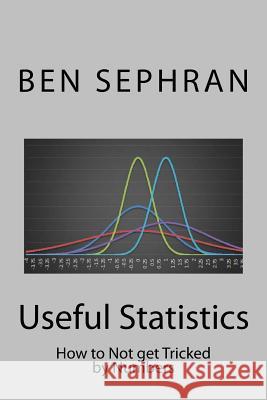Useful Statistics: How to Not get Tricked by Numbers » książka
Useful Statistics: How to Not get Tricked by Numbers
ISBN-13: 9781523323821 / Angielski / Miękka / 2016 / 100 str.
No matter where they are, from Africa to the Middle East and from Asia to the Americas, and no matter what they are learning, students always have one question to ask: "Why are we learning this? What is it good for?" Many teachers respond by saying the material taught in schools are of use later, which is very much true: This is how the majority of educational systems in the world work to advance science and technology. Some say that learning by itself is a virtue. That it deciphers the beauty of the world. These are all good answers, but they do not mean the concepts we learn are without use in everyday life, and this is particularly true about mathematical concepts and even truer about statistics. And since I asked the same questions when I was a student, I decided to write what you have in your hands. The purpose of this book is to do two things: 1.Introduce (or re-introduce) statistical concepts and define them in an easy way. And no, easy does not exclude mathematics. It just means easy maths 2.Immediately exemplify statistical concepts by using stories from the real world, especially focusing on where people go wrong about using them. From presidential candidates to tumblrite feminists, nobody is safe I hope this book can answer the question of why you should learn these things, and how to use them to avoid getting tricked by someone who uses numbers in confusion, or to confuse.












